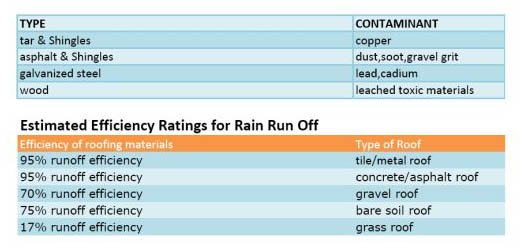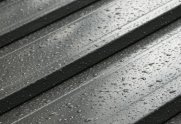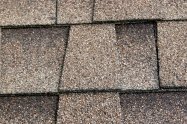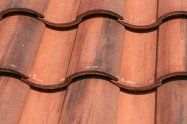
Roofing Materials

The best roofing materials for catching rainwater would have to be concrete roofing,metal roofing and aluminum roofing for the simple fact that their surface is smooth.
Collecting rain water depends a lot on the size of the catchment area, surface, texture and slope of the catchment area.
The guide below will give you an idea of the potential contaminants associated with various roofing materials :

Non toxic, smooth and dense roofing materials that don't accumulate organic matter or form any small pools of water are the best to capture rainwater collection.
We will only be concentrating in capturing rainwater in rain barrels for NON POTABLE USE as potable water is a total new subject on it's own.
If you are going to use rain water as potable water, aluminium roofing is generally recognized as the best material for doing this, as it holds up well and corrodes very little in comparison to other materials.
It may add a trace amount of aluminum in the water but will not pose a health risk nor does it affect the taste.
No matter what roofing material you use, the roof can become contaminated from the buildup of organic material such as bird droppings, leaves, tree branches and other solids.
A lot of the organic material that builds up comes from trees that are in too close proximity to the house.
Here are a few images of the different types of roofs :

Advantages of Aluminum Roofing :
.95% Runoff efficiency
.holds up well and corrodes very little in comparison to other materials
.Easy installation
.Reduces your energy bill
.Reflect more than 90% sunlight
.Non combustible

Advantages of Asphalt Shingles :
.95% Runoff efficiency
.Requires little maintenance
.Cheap,costs less than 1$/sqft
.Lightweight
.Flexible & Sturdy

Characteristics of Terra Cotta roof tiles :
.95% Runoff efficiency
.Ridges etched into the tile, make it ideal for directing rainwater
.Environmentally friendly
.Ideal for warm climates
.Strong & durable against wind, moisture and rain


